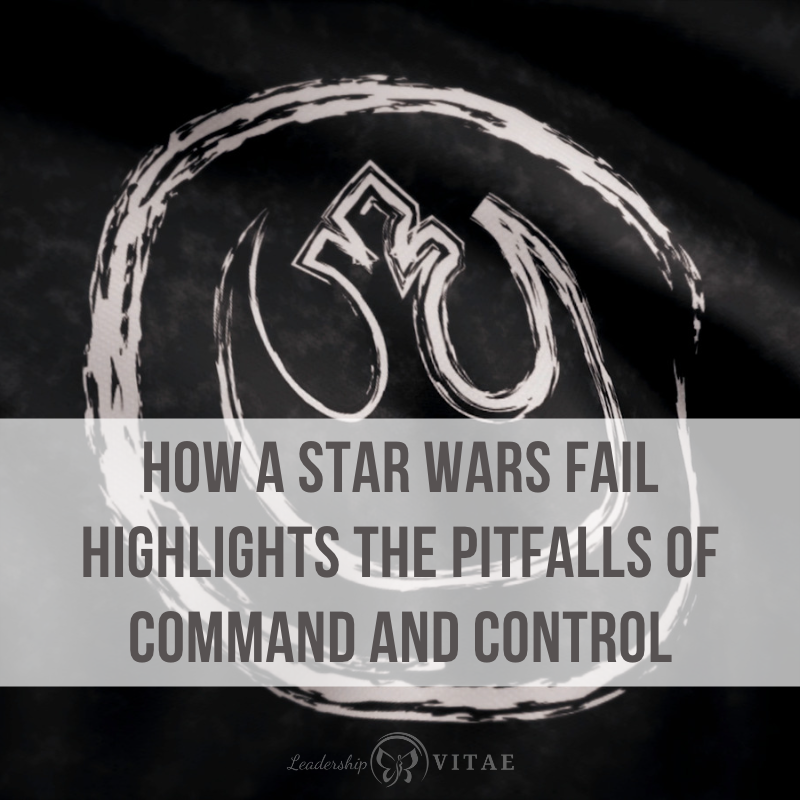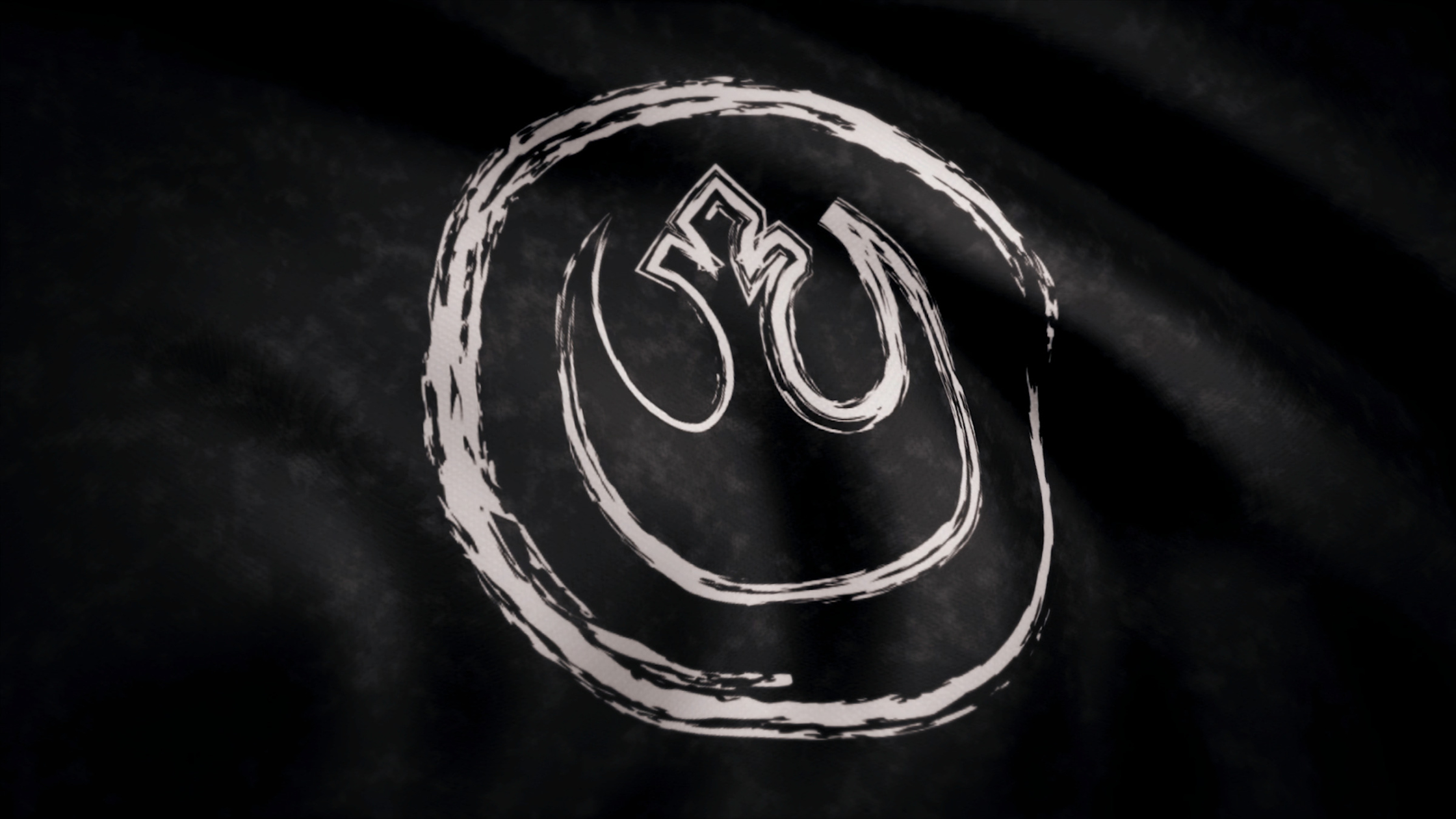
I’m a long-time Star Wars fan, as can be seen from my writings over the years. During the early parts of the pandemic, I decided to watch 100 Star Wars movies and they still didn’t get old.
When I’m working out, writing, or decompressing, those movies are my comfort. And occasionally, even after all these years, I see something unexpected that causes me to pause and reflect.
I’ll admit, much like the old trilogy for me, the new trilogy isn’t for everyone. Nothing will ever touch the originals in my view, but I can still enjoy them. However, something about The Last Jedi (SW VII) hasn’t been sitting well with me since its release.
It’s not the clear departures from prior cannon or the way it was retconned in the next movie (I’m a fan, but maybe not a FAN). As per usual, given my upbringing and early career with the military (and my passion for leadership) it’s the breakdown in command.
Command and Control
Star Wars is supposed to take place long ago. It’s only been in recent years that organizations have shifted from command and control towards servant leadership. As a result, it’s not completely shocking to see that style show up in the story.
As Leia is sidelined, Vice Admiral Holdo must step in and lead the resistance. They are in an emergency situation, being chased by the First Order while running low on fuel. Holdo could be forgiven for using tried and true, directive methods in an emergency. It’s the one time when it can and should be part of our leadership approach.
Yet this approach always has consequences, especially if it’s wielded regularly. Or with a new team that is not yet familiar with our leadership.
Holdo was a new face to a scrappy group and had no history with them. They had no perspective of how she shows up on a good day (non-challenging situation), her decision-making process, or frankly anything about her or her leadership.
Trust had not yet been established, making command and control a risky leadership approach. Yes, it was an emergency and time was of the essence. However, when trust is missing, we must be more transparent. If we go right to directive vs collaborative, coaching, or visionary before establishing ourselves to our teams, they will resist.
Challenging vs insubordination
When we have the perception that a leader is doing something highly risky, we have a responsibility to ask questions and challenge. While ‘command and control’ is meant to be directive, and the team is supposed to follow orders, no one should be expected to blindly walk off a cliff we can see coming.
Poe failed in his own leadership journey. Yes, he questioned. Well, he demanded. He was so sure he had the right to know the details and be convinced, so he challenged Holdo publicly. The military taught me that we can question and challenge, but once an order is given, it’s time to support the decision.
Poe is the junior person in the equation. It is true that Holdo didn’t build trust with him, but he didn’t give her the opportunity to trust him either. We demonstrate our trustworthiness and capability generally before we go around challenging orders.
He did the math, adding 1 + 1 to get 2. So convinced he was right, he moved forward with an alternate plan. He was insubordinate and ultimately the reason why Holdo’s plan failed and most of their team perished.
If we want to be trusted, we must also be trustworthy. Find ways to challenge, ask questions, or offer alternatives. We can also recognize and respect the chair. Poe’s ego stood in the way of a solid plan, even if he wasn’t aware of it.
We don’t have to know everything in case of an emergency. If our leader has prior experience leading through emergency situations, we can have concerns but we are ultimately not the leader and likely don’t have all the information needed to make the best decision.
Going AWOL
Poe is a leader among the crew, and Holdo missed an opportunity to treat him as such. Unfortunately, that decision had broader impact as others developed questionable ideas and pursued alternate plans.
Finn and Rose both completely ignored what was going on and didn’t check in with the ranking officer on the ship. Finn is used to breaking from the order of things (pun intended), but Rose too? She has such a sense of honor and doing the right thing that it comes across as out of character.
They both went out on a risky path without understanding the plan Holdo had in place. They had no idea whether what they were doing would either help or harm her overall strategy. Not only were they not following orders…they went AWOL.
Everyone on a team has a role to play. When we abandon ship, even if we think our actions are ultimately going to help the team, we can’t do our part. Whether a plan is flawed or not, when we go AWOL, we are likely contributing to its ultimate failure.
As Finn and Rose found out. They were so focused on the path they were following, they ended up trusting the wrong person under pressure. Spoke freely about what was happening with the resistance and ultimately put intel in the hands of the enemy. Their efforts, though guided by good intentions, decimated the resistance and undermined the plan Holdo had in place.
Trust as a foundation to challenge and accept
The failures of Holdo, Poe, Finn, and Rose were all preventable. It was like watching a trainwreck play out and not being able to stop it. After so many viewings of the movie, it’s easy to see each step that could have been handled differently. But then there wouldn’t have been a movie to watch.
This is a fictional story, but one that plays out frequently in real life. Leaders that rely on command and control, assuming their teams will just accept orders as given. Demotivated individuals, seeking ways to add value, end up looking for alternative solutions, roles, or organizations.
Trust is the key ingredient to successful leading and following. Leaders that establish a foundation of trust, limiting the use of command and control until it’s truly necessary, are more likely to have followers that align to their vision and plans. Because they will feel part of them.
On the flip side, team members can consider what they know about their leader and their history. They can realize the situation at hand may require a different type of leadership and trust the chair. Air concerns, ask questions, and then accept the decision that has been made.
For most of us, the work we are doing does not have lives at stake. We can afford to give a little leeway, especially in the cases where command and control may be appropriate. If we are new to leadership, or to a given team, taking the time to build trust is critical so that tough times result in the team banding together and no one abandoning ship.








